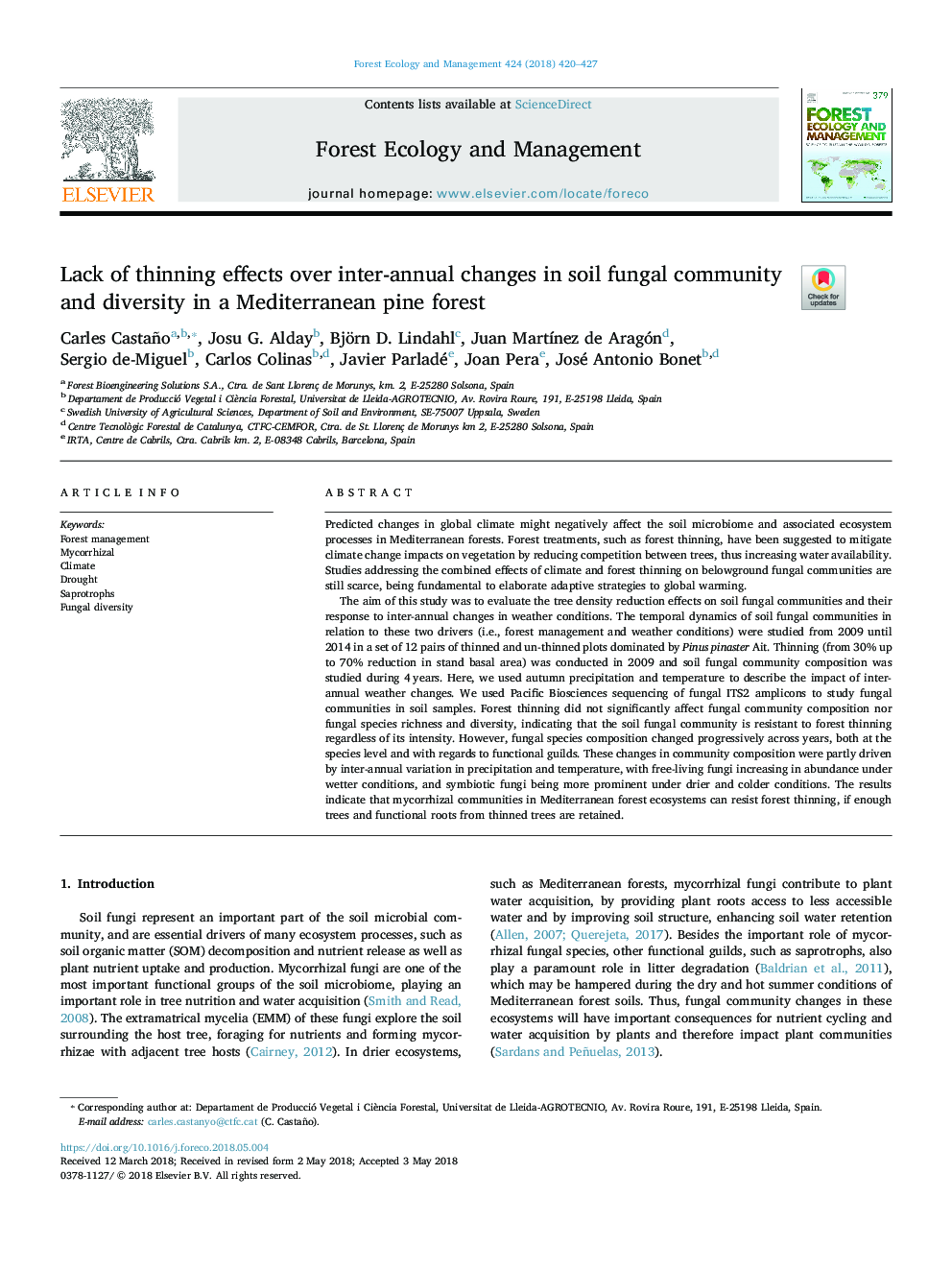| Article ID | Journal | Published Year | Pages | File Type |
|---|---|---|---|---|
| 6541615 | Forest Ecology and Management | 2018 | 8 Pages |
Abstract
The aim of this study was to evaluate the tree density reduction effects on soil fungal communities and their response to inter-annual changes in weather conditions. The temporal dynamics of soil fungal communities in relation to these two drivers (i.e., forest management and weather conditions) were studied from 2009 until 2014 in a set of 12 pairs of thinned and un-thinned plots dominated by Pinus pinaster Ait. Thinning (from 30% up to 70% reduction in stand basal area) was conducted in 2009 and soil fungal community composition was studied during 4â¯years. Here, we used autumn precipitation and temperature to describe the impact of inter-annual weather changes. We used Pacific Biosciences sequencing of fungal ITS2 amplicons to study fungal communities in soil samples. Forest thinning did not significantly affect fungal community composition nor fungal species richness and diversity, indicating that the soil fungal community is resistant to forest thinning regardless of its intensity. However, fungal species composition changed progressively across years, both at the species level and with regards to functional guilds. These changes in community composition were partly driven by inter-annual variation in precipitation and temperature, with free-living fungi increasing in abundance under wetter conditions, and symbiotic fungi being more prominent under drier and colder conditions. The results indicate that mycorrhizal communities in Mediterranean forest ecosystems can resist forest thinning, if enough trees and functional roots from thinned trees are retained.
Related Topics
Life Sciences
Agricultural and Biological Sciences
Ecology, Evolution, Behavior and Systematics
Authors
Carles Castaño, Josu G. Alday, Björn D. Lindahl, Juan MartÃnez de Aragón, Sergio de-Miguel, Carlos Colinas, Javier Parladé, Joan Pera, José Antonio Bonet,
